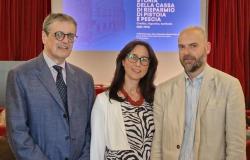1
In the first part of «Spinoziana 1» we were able to sadly contemplate how not even our notoriously complex philosopher is exempt from paying the fine for disclosure and how, in fact, albeit with other means, he continues to be persecuted. Given the widespread diffusion of such filthy journalism, it will be appropriate to propose some perspectives of a completely different kind.
I suggest starting with a good bio. We are lucky because, in addition to the lives of contemporaries Lucas and Colerus (The Lives of SpinozaQuodlibet)very skimpy and often to be taken with a grain of salt but undoubtedly fascinating and often useful, in Italy there exists a work of enormous value, namely Spinoza and seventeenth-century Holland by Steven Nadler (Einaudi, as well as all the others we will meet by this writer). However, be careful to obtain only the second and final edition, titled exactly as we have just seen, and to avoid the first ones, which are not short of oversights and errors.
Nadler satisfies the needs of the most meticulous readers as much as possible, introducing Spinoza’s life first of all with a vast and highly informed overview of the historical, political and cultural context in which the philosopher lived and worked.
However, what should be underlined most about this splendid biography is its honesty. There are many insidious but particularly controversial moments and above all susceptible to triggering anger and hysteria: I am naturally referring to Spinoza’s relations with the Jewish community. Yet Nadler, who – warning to the supervisors – certainly cannot be accused of anti-Judaism, manages to say everything to the end.
Nadler is an almost compulsive Spinozist, in fact he didn’t stop at the biography. Let us first remember the vast exposition of the Theological-political treatise with an eloquent title A book forged in helland then Spinoza on life and deatha true summa of Spinoza’s thought, which also involves the less frequented works, such as the Treatise on the amendment of the intellect and the Short treatise on God, man and his good.
Nadler’s latest work, Spinoza’s heresyinstead brings a specific and delicate theme, as the subtitle suggests: toImmortality and the Jewish spirit. Here Nadler tries to get to the bottom of the herem (ban, or curse) hurled by the Jewish community against Spinoza and which had harsh and serious consequences for the philosopher. According to Nadler, overall, the basis of that extreme and casual decision of the synagogue was precisely the question of the immortality of the soul, a stinging matter Between the Jews but not For the Jews of Amsterdam among whom Bento lived.
Here I beg to differ since I fear that the reasons for the herem are very different and much less spiritual, indeed not at all. And if the synagogue then made that decision due to the incompatibility between traditional Jewish thought (talking about tradition is always equivocal and misleading, especially in heteroclite Judaism) and that of Spinoza, the herem, already hateful in itself, would be even more revolting, and the Jews would have nothing to envy or reproach, for example, the executioners of Giordano Bruno.
But now we have to raise the bar.
*
2
Not long ago the work on reappeared Spinoza by Giuseppe Rensi (Nino Aragno Editore)a notable philosopher forgotten by the dominant culture of yesterday and today, whose work in Italy only very few have attended, two above all and very different from each other: Piero Martinetti, who was also a friend of Rensi, and Manlio Sgalambro.
Indeed, these are two texts: one, short, from 1929; the second, from 1941, is a truly extensive and complete study, focused above all onEthics. Among the many remarkable qualities of the work is the sagacious and careful staging of a varied dialogue between Spinoza and a notable part of European culture, philosophical and otherwise. The pages with Tommaso Campanella and Roberto Ardigò are splendid, especially the latter certainly not among the most cited thinkers in critical literature, nor re-proposed.
Rensi also had considerable familiarity with the so-called “exact” sciences, as demonstrated by several passages in which he intercepts resonances between the then new physics and the Spinozian doctrine of time by painting among the most turbulent pages of the book. Taking as an example the war that had recently broken out at that time, the Italian philosopher explains that
«all these facts in turn originate from previous geographical, ethnological, physiological, cultural, etc. causes. All these from others still earlier and these from others and so on, which ultimately go back to primitive humanity, to the formation of the earth, the solar system, the universe: that is, which are pre-contained in the set of causes or in the First Cause . The outcome of the current war, therefore it already exists in this first Cause, and only for us it comes out, it happens, at a given time. The outcome of the war it’s already thereit already exists perfectly, and the which awaits us like an object distant in space but fully and firmly constituted; and like something which is already there we do not, seeing him emerge little by little from the mists of time that veil his existence from our eyes today current, than to meet you (…). And to perceive the depth and modernity of this Spinozian conception it will be enough to remember that it is more or less what today’s physics arrives at, with its fusion in a single continuum of space and time.”
Almost immediately he reports a fragment from a certain James Jeans (1877-1946), a British scientist who is now forgotten but who was among the most internationally renowned in his time. Let’s listen: «It used to be thought that the universe developed like a pattern on a weaver’s loom»: but today it is believed «that the entire comparison of the evolution of the world and the weaving of a pattern is wrong. Time is no longer time or does not imply changes; it is simply a continuous geometric direction chosen by us. The design is not woven piece by piece without interruption in a time that no longer exists, but is exposed to our eyes complete in a continuum in which future events have exactly the same type of existence as past events… The fusion of space and time in a superior unity, the continuous space-time – which transcends them both and is immutable – satisfies the needs of philosophers, even if only at the cost, as far as it is possible to see today, of relegating becoming to the world of appearances” (The new horizons of science, Florence, Sansoni, 1934, pp. 99, 101)”.
Of course: Rensi does not submit philosophy to the sciences, which are only a confirmation, now indirect, now direct, of profound philosophical intuitions, and which almost act as a decoration for these, although equipped – perhaps, we add – with a foundation. But this distant dialogue with scientific attempts to explain reality places Rensi outside the confines of majority Italian philosophy.
But what matters most is that Rensi in this way forced science, at that time much less obtuse than today, to become aware of its limits and of the role of philosophy in the epistemological domain.
Unfortunately, as usual, we cannot go into too much detail, also so as not to deprive the reader of the pleasure of self-discovery. It only remains to highlight that the volume not only constitutes, in the writer’s opinion, one of the best introductions to Spinozian thought but also an example of Rensian acumen. Here Baruch de Espinoza really explodes in continuous fires that make him appear very different, deeper and prescient, from how so much criticism has cooked him up, almost always very scholastic.
*
3
In the face of all this and the abundant and enlightening other surprises that await the reader within these pages, we must denounce a truly disheartening editing.
As the editor explains, Rensi died before being able to revise the form of the text. But instead of simply noting this detail, the editor should have remedied the flaws and, furthermore, provided the book with the minimum apparatus that is necessary for any reprint. But no.
First of all, the many original typos remain intact.
Rensi’s bibliographical references, for example the reporting of the pages of Theological-political treatise which refer to the specimen owned by the Italian philosopher, are never accompanied by an update, so that either one has the unlikely fortune of possessing that specimen, or one has to work like a miner.
Even the quote from Jeans’ work is left as it is and we don’t even bother to provide information on who this writer was. (Incidentally, there are still some antiquarian copies of the work around).
Another no less irritating failure are the quotations in German, Greek and especially Latin. In fact, if Rensi has not translated them, the reader will have to make do. One thing would be a few words or a short sentence: but here we are talking about entire pages. I put myself in the shoes of a reader without this linguistic knowledge and I justify him in getting irritated.
However, if we then want to be snobbish and say that everyone must know four or five languages, I might agree: but only on the condition that the activity of translator from any language, for any text and from any context is abolished by law ( including international politics) and the newly unemployed are forced to go to post offices to glue the stamps with their tongues.
This general sloppiness is truly a shame for a splendid book which, despite its negligence, is saved from top to bottom. I only hope that this contribution will encourage the publisher to completely revise the editing for a second edition of this Spinozawhich I hope all strings (with all my heart). AND amen (so be it).
Luca Bistolfi






